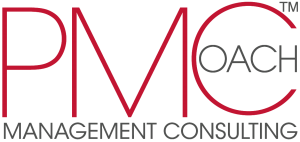Warm up: Where to find information for analysing target export countries
This training session concludes the “warm-up” part of our orientation programme on internationalisation.
We have provided some initial inputs for proceeding in a systematic manner when structuring an export plan.
I think it is now necessary to sum up a series of sources from which you can derive up-to-date information relating to your business. Get down to the specifics. We have talked about theory but now let’s get our hands dirty in the Web by extrapolating data for our analysis and creating a veritable database.
We can divide information into two large categories:
– Primary information, or data that are processed specifically for one purpose
– Secondary information, i.e. data that are already available through a variety of channels
It goes without saying that the information in the former category is on average more precise but it is also more costly and can take longer to collect.
Secondary information, by contrast, is often free and up to date, especially if you operate in markets that are not specialised niches. Pay a bit more attention to data accuracy if you have to make comparisons between countries and the data sources are different.
That said, let’s see how to break down the sources of information and provide some useful references:
Information related to countries and markets
Since 1989, Assocamerestero, with the contribution of Italian Chambers of Commerce abroad, has been publishing the BUSINESS ATLAS – a guide to business in 54 countries worldwide.
The country descriptions in the Business Atlas provide a concise and functional overview of the main characteristics of different foreign markets, data on trade and the flow of investments, regulatory and legislative aspects, details about the Italian Chambers of Commerce abroad and other useful information.
SACE: country information, risk map and export opportunities.
Website of the Italian Trade Agency. You can find free services providing initial guidelines for exporting to a specific country or according to market sector. It also offers custom fee-based services (primary information) created for your product in relation to a given country.
Website of the Central Intelligence Agency (USA), which analyses and keeps track of inflation rates in countries around the world.
Index of Economic Freedom, which enables you to monitor a wide variety of tax, economic and legal indicators.
Specific information for the type of business concerned
Here we will obviously not suggest any specific links that may be useful for seeking information about your sector. Only a few tips on where to find them.
I’d start off by asking the Italian Trade Commission for help. They have contacts with a large number of professionals in an equal number of sectors. Through one of their representatives you can establish a constant link so as to get up-to-date information or set up a direct contact with a colleague based in the target country.
Trade associations. An important opportunity for retrieving primary information given that they represent your business at home and abroad. In this case as well, make a phone call and identify a valid contact person with whom to establish a working relationship. They will be more than happy to intermediate an exchange of up-to-date information between your company and other businesses and associations abroad.
Trade publications and newsletters
Many of these are free. Many others are available at a minimal cost for your company. Once you have identified the right source for you, register and request that publications or updates be sent to you automatically. Create a rule for your email account in order to organise and save them in an intelligent manner so you can consult them when you have the time and need to do so. This is an activity that you should not limit to the analytical phase alone, as it will always be useful to you.
LinkedIn. Create a network! Increase the number of contacts whose profiles match the characteristics of your sector and are inclined toward foreign trade activities. Follow the groups that talk about your business and do not hesitate to interact with them. Ask questions if you need something specific. You’ll find plenty of collaboration!
Information about trade flows
European Commission Market Access Database.
Here you can find statistical information on import-export flows, information about duties and tariffs and indications about the trade barriers in the individual countries you are interested in.
ISTAT (Italian National Institute of Statistics). A source of foreign trade statistics broken down by product category. Both exports from Italy to the rest of the world and between one foreign country and another. This will enable you to identify the countries that import the product you are most interested in.
IHS Global Trade Atlas. An online system for viewing world trade statistics. You can track the importation and exportation of a product on a global level, identify new markets and competitive products, analyse market trends by viewing historical data and find a breakdown of market shares by product and country
Information about competitors and information about companies
The register of the Italian Chambers of Commerce on companies engaging in foreign trade. It enables you to find out whether a competitor exports to a specific country.
Import Genius. By analyzing international cargo manifests you can trace the name of your competitor and find out where they export goods to and to whom (potential customers). Service provided for a fee.
To these we should add signing up for newsletters and registering for the LinkedIn company pages of competitors. In this way you can monitor their activities and developments.
Once again I’d like to stress that this work of selecting and organising the sources of information will enable you not only to retrieve data useful for the phase of analysis but also and above all to keep yourselves up to date as professionals.
That’s all for this training session!
The next focus will be on selecting the methods for entering a market.
Follow us. One training session at a time.


